Rhubarb is a hardy and productive perennial plant that graces many northern gardens. It’s a cool-loving plant that doesn’t do very well in the south and high-temperature climates (this much is true).
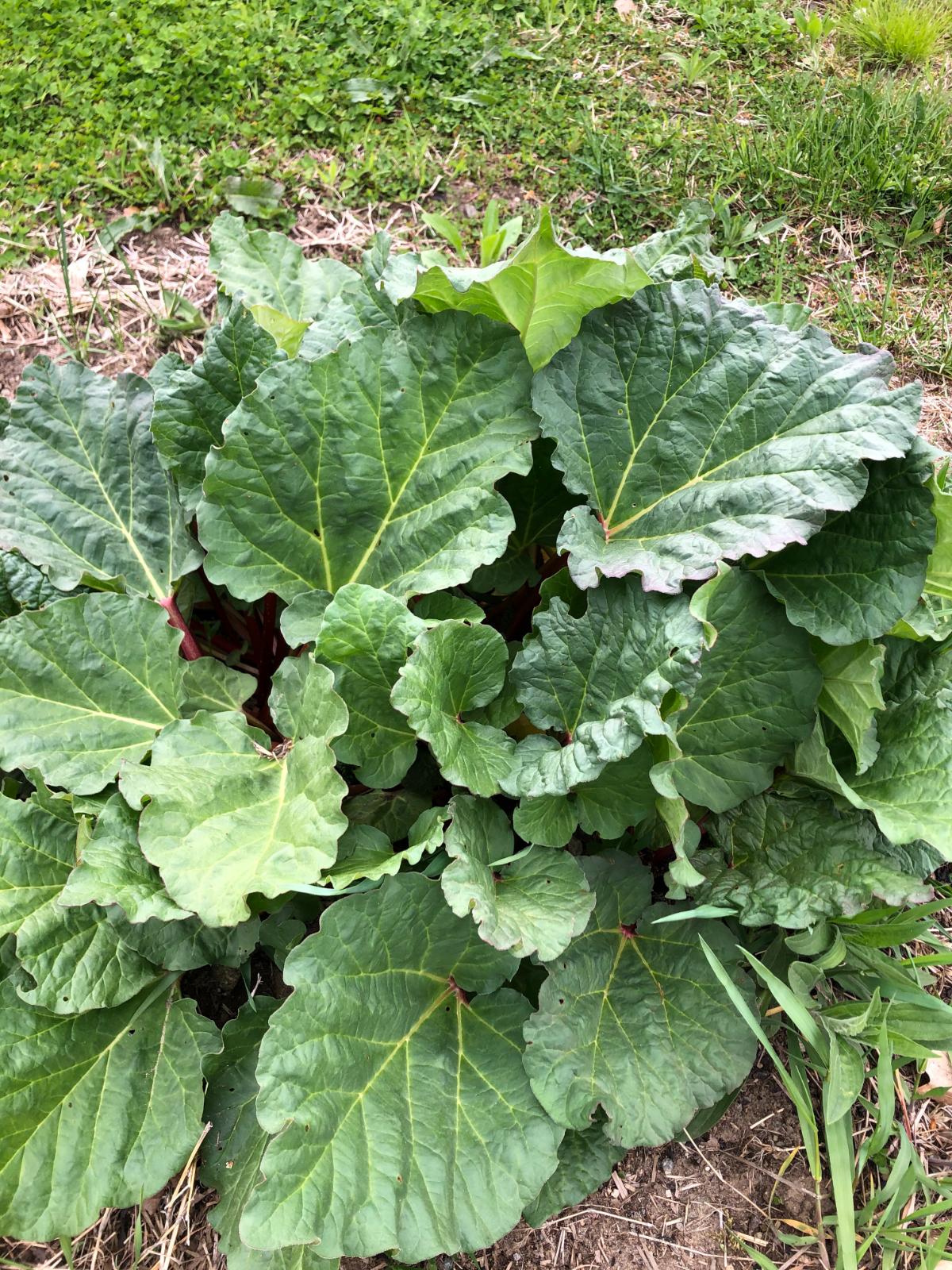
Rhubarb is a plant that originated in Europe and is grown around the world. Oddly enough, though, for as popular as this plant has historically been, there are some myths that surround it – and that perpetuate through home growing circles.
Perhaps its long-lived popularity and history is part of what contributes to these myths. Either way, we’re here to dispel 12 of the most common myths associated with rhubarb.
Jump to:
- Rhubarb Myth #1: You can’t eat rhubarb after it’s frosted.
- Rhubarb Myth #2: You can’t harvest rhubarb in the summer or fall.
- Rhubarb Myth #3: There is a “ripe” period for rhubarb.
- Rhubarb Myth #4: Red stalks mean rhubarb is ripe or most flavorful.
- Rhubarb Myth #5: Rhubarb is a fruit.
- Rhubarb Myth #6: Rhubarb has to be cooked to be eaten.
- Video: Rhubarb Myths Busted!
- Rhubarb Myth #7: Rhubarb needs another fruit with it.
- Rhubarb Myth # 8: You can’t pick rhubarb after it flowers.
- Rhubarb Myth # 9: Rhubarb has to be used within a few days.
- Rhubarb Myth #10: Rhubarb leaves can’t be composted.
- Rhubarb Myth #11: Rhubarb doesn’t “catch” diseases.
- Rhubarb Myth #12: Insects don’t bother rhubarb.
- Dismiss the Myths and Enjoy More Rhubarb!
Rhubarb Myth #1: You can’t eat rhubarb after it’s frosted.
One of the most enduring myths is that you can’t eat rhubarb if it gets frosted in the spring.
Now, if you think about it, this myth doesn’t make much sense. As we said, rhubarb is a cool-loving plant that can get stressed in the summer and doesn’t do well in more southern climates.
It is also one of the earliest plants to pop up in the spring, and one of the very first edible plants that get harvested each year. Its timing is similar to the asparagus growing and harvesting season. The bulk of the harvest is over by the end of June, but many of the places it grows don’t see an end to frosty nights until mid to late May.
So, does it make sense that a spring frost would render rhubarb inedible? Considering that you’re quite likely to get a spring frost if you grow rhubarb in its preferred regions?
The University of Iowa says this is one of the more common rhubarb myths. Rhubarb can take low 30-degree and upper 20-degree Fahrenheit (F) temperatures without missing a beat. The stalks and leaves will not usually see damage until you get to the mid-20 °’s and lower.
If the plant is hit by a harder freeze and stalks are damaged, you’re not likely to want to eat them anyway because the quality is low, and they turn to mush as a result of the hard freeze.
And so, the advice from the pros is that if a plant suffers low temperatures, pull and discard any stalks that are limp and damaged, or that have blackened leaves. Any that don’t show signs of damage are fine, and any that grow after that are perfectly safe, too.
Rhubarb Myth #2: You can’t harvest rhubarb in the summer or fall.

It’s understandable how this myth came to be. We generally harvest rhubarb hard and heavy during its peak growing season, which is in the spring and early summer. Usually, this is a season from about April to June or early July.
After this, we stop harvesting heavily because the plant needs to rebuild, regenerate, and feed the root and crown for next year. It needs the rest of its stalks and leaves to feed it. But that is for the sake of the plant, not because there is anything wrong with it.
The stalks later in the summer and fall might be a little tougher, but they’re still perfectly safe and edible. The reason not to take too much later in the year is for the plant’s health. Still, you can pick some stalks for later dishes if you’re just taking enough for a baked good or two, a small batch of jam, or a pie or two.
More than that, though, and you risk damaging and weakening the plant, which would affect its long-term life.
Some sources will even say that summer rhubarb is poisonous (sort of like how they say frosted rhubarb is poisonous). That’s just not true. It’s a misunderstanding grown out of good growing and harvesting practices and a myth that just got repeated too often.
Rhubarb Myth #3: There is a “ripe” period for rhubarb.
You don’t need to wait for rhubarb to be ripe. Rhubarb doesn’t ripen like other vegetables and fruits do. It is more like an herb or something like a cucumber – it's good and edible at any stage, early, middle, or late (as long as it’s not dried up and mushy and dying). It may be more or less tender, but that’s it.
You can pick rhubarb at any time, but you should wait until the stalks are about 12 inches or taller, so you know the plant is supported with its production and it has established itself for the growing year. Other than that, harvest away!
Rhubarb Myth #4: Red stalks mean rhubarb is ripe or most flavorful.
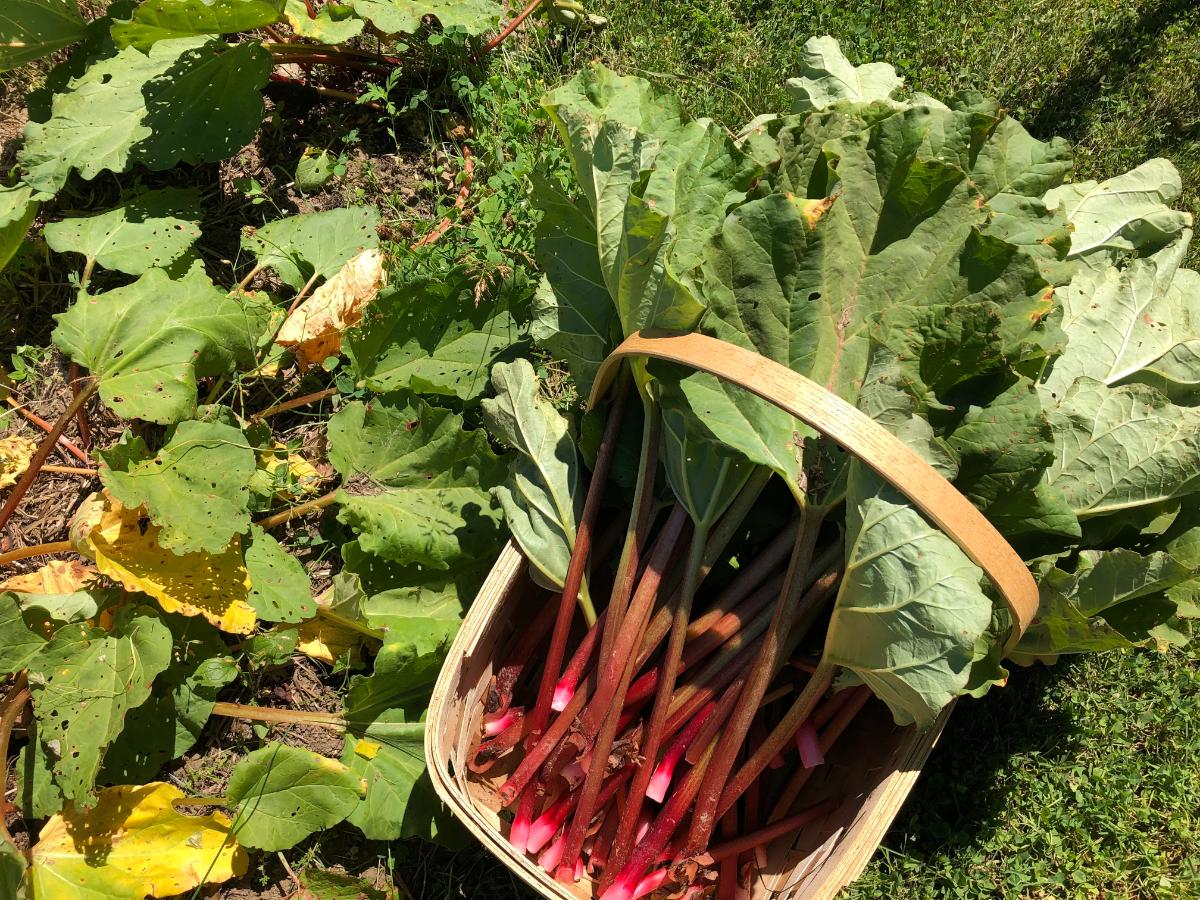
Color is not a good indicator of ripeness or flavor. In fact, it’s not really an indicator at all.
Whether rhubarb is more red or more green or somewhere in between depends on the variety of the plant. The stalks on rhubarb are whatever color the plant grows, and they don’t change much with time and growth.
Color does not signal “ripe” for rhubarb. Rhubarb is always ripe and ready once it is large enough to amount to something and to show that the plant is off and running.
Rhubarb Myth #5: Rhubarb is a fruit.
Rhubarb is not a fruit, it is a vegetable, botanically speaking. People often think of rhubarb as a fruit because its flavor is tangy and tart and more fruit-like than most vegetables. We also treat it more like a fruit when we cook with it, using it in things like jams, sauces, pies, tarts, and baked goods. Rhubarb is high in acid, so when it is canned and preserved, it’s often thought of in the fruit canning category.
One of the reasons this is confusing is that in 1947 the United States Department of Agriculture classified rhubarb as a fruit for the purpose of determining taxes and tariffs. They decided that because it was used like a fruit, it should be taxed as a fruit (which meant had a lower tax/tariff associated with it for importing). That was just a judgment call, though, and the plant is not a fruit! It is a member of the buckwheat family.
Rhubarb Myth #6: Rhubarb has to be cooked to be eaten.
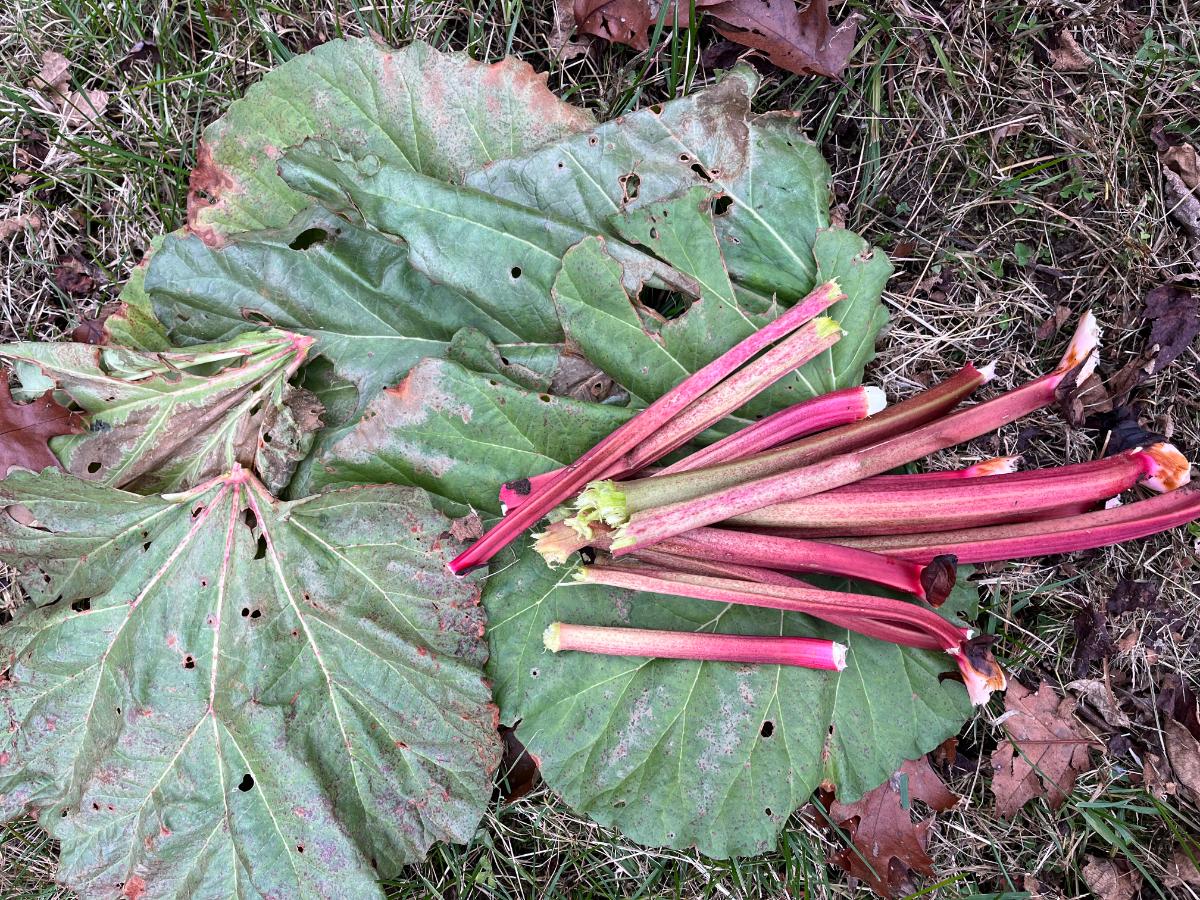
Some people think that because of the oxalic acid content rhubarb has to be cooked to be eaten. While it is true that some people may be more sensitive to the acid than others (as any person can be more sensitive to a food or vegetable than another person can), there is nothing wrong with eating raw rhubarb.
The reason people don’t eat it raw? It’s a very tart vegetable, quite sour, and most people don’t like it raw.
Most people prefer rhubarb in cooked dishes with sweeteners added and often with other fruits or berries.
That said, there are plenty of us with memories of sitting in a rhubarb patch as kids (or maybe adults) and dipping a stalk of trimmed rhubarb in sugar or salt and crunching through the dipped stalk.
The interesting debate really seems to be just that – salt or sugar??
Video: Rhubarb Myths Busted!
Rhubarb Myth #7: Rhubarb needs another fruit with it.
This brings us to our next myth: rhubarb only tastes good if it is mixed and cooked with another fruit.
Simply not so.
It is true that rhubarb makes an excellent accompaniment to many fruits and berries, but it also tastes delicious on its own. Rhubarb sauce (basically rhubarb cooked down with sugar) is a great topper for ice cream. Rhubarb makes an excellent feature by itself in cookies, cakes, quick breads, rhubarb pie, crumbles, bars, and more. It even makes a truly excellent light wine!
We can’t deny that rhubarb is also an excellent pairing for strawberries, blueberries, apples, and more, but it doesn’t have to have a partner. And that’s great news because rhubarb is harvested at a time when not a lot of other fresh fruits are available, at least not fresh from the garden!
Rhubarb Myth # 8: You can’t pick rhubarb after it flowers.
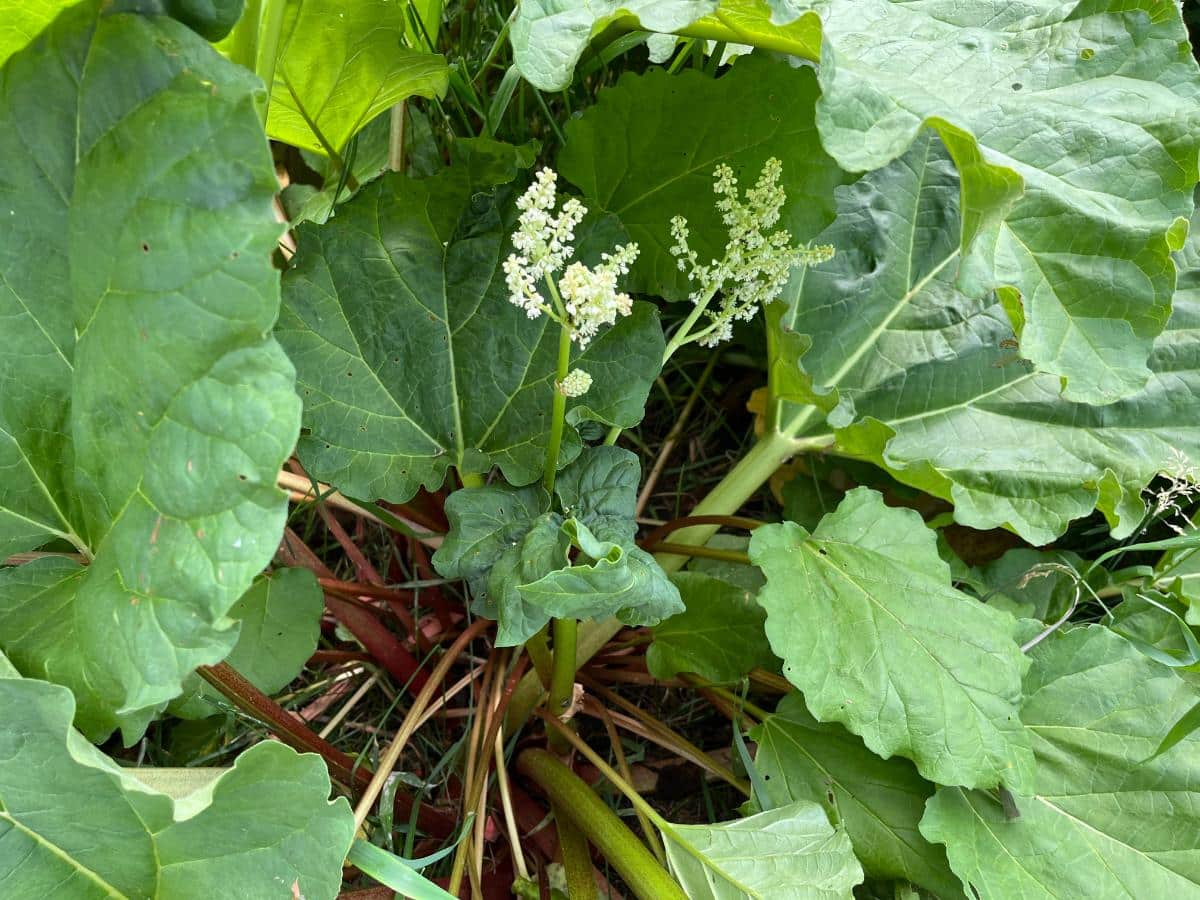
It’s not uncommon for rhubarb to send up flower stalks that turn to seed. It’s often thought that you can’t harvest and eat rhubarb after this happens.
Again, not true. In fact, if you prepare them properly, you can even eat the blossoms!
You should pull or cut the flowering stalks when you see them, but this is so that your plant doesn’t waste its precious nutrients, water, and energy on flower stalks. You want that energy to go into the edible, celery-like stalks on the plant, so you have more to pick and enjoy.
You should not neat the stalks that grow the flowers, though, because those contain higher levels of oxalic acid. Just get rid of them or compost them instead. (Which is safe to do – see myth number 10!)
Rhubarb Myth # 9: Rhubarb has to be used within a few days.
Rhubarb lasts very well in the refrigerator. You should put it in a plastic bag or container with little air space. This will help keep it crisp. If you leave it out in the refrigerator, the stalks will get limp.
If your stalks do get limp, you can set them in some cold water, and they should crisp up again.
Rhubarb lasts between two and four weeks in the fridge this way, though the flavor might be a little blander as time goes on.
That said, as with many things, the fresher your rhubarb, the better and more flavorful it will be, but well-stored rhubarb will keep well and be delicious for several weeks.
Rhubarb Myth #10: Rhubarb leaves can’t be composted.
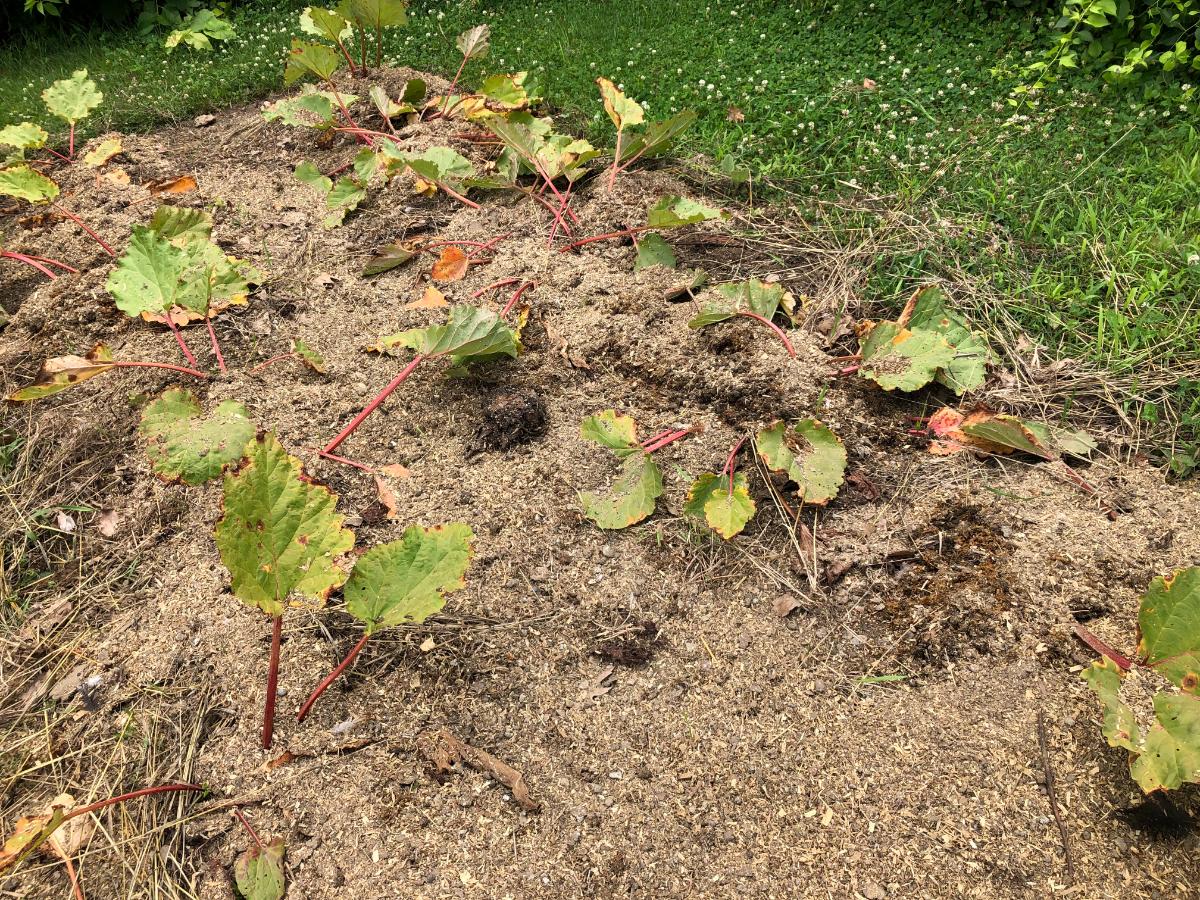
Some people think that because rhubarb leaves should not be eaten (because of the higher level of oxalic acid in the leaves), that that means they cannot be composted, either. This is not true.
The oxalic acid in rhubarb leaves is not easily absorbed by other plants. Also, the acid breaks down quickly in the compost pile. It’s perfectly safe to compost rhubarb leaves, and perfectly safe to use compost that has decomposed rhubarb and/or rhubarb leaves in it.
Rhubarb Myth #11: Rhubarb doesn’t “catch” diseases.
You might classify this myth as a little bit true (but then again, all myths seem to have a drop of logic in their origin).
It is true that rhubarb is almost always an easy keeper, and it doesn’t fall prey to diseases very often. When it does, the issue is almost always in care and management. The diseases that rhubarb is prone to are associated mostly with root and crown rot. Those set in when the ground the plants are living in stays too wet and the soil can’t drain.
Most problems that potentially plague rhubarb can be avoided just by choosing a good planting location with well-draining, fertile soil and good sun, and feeding and caring for your plants properly.
Rhubarb Myth #12: Insects don’t bother rhubarb.
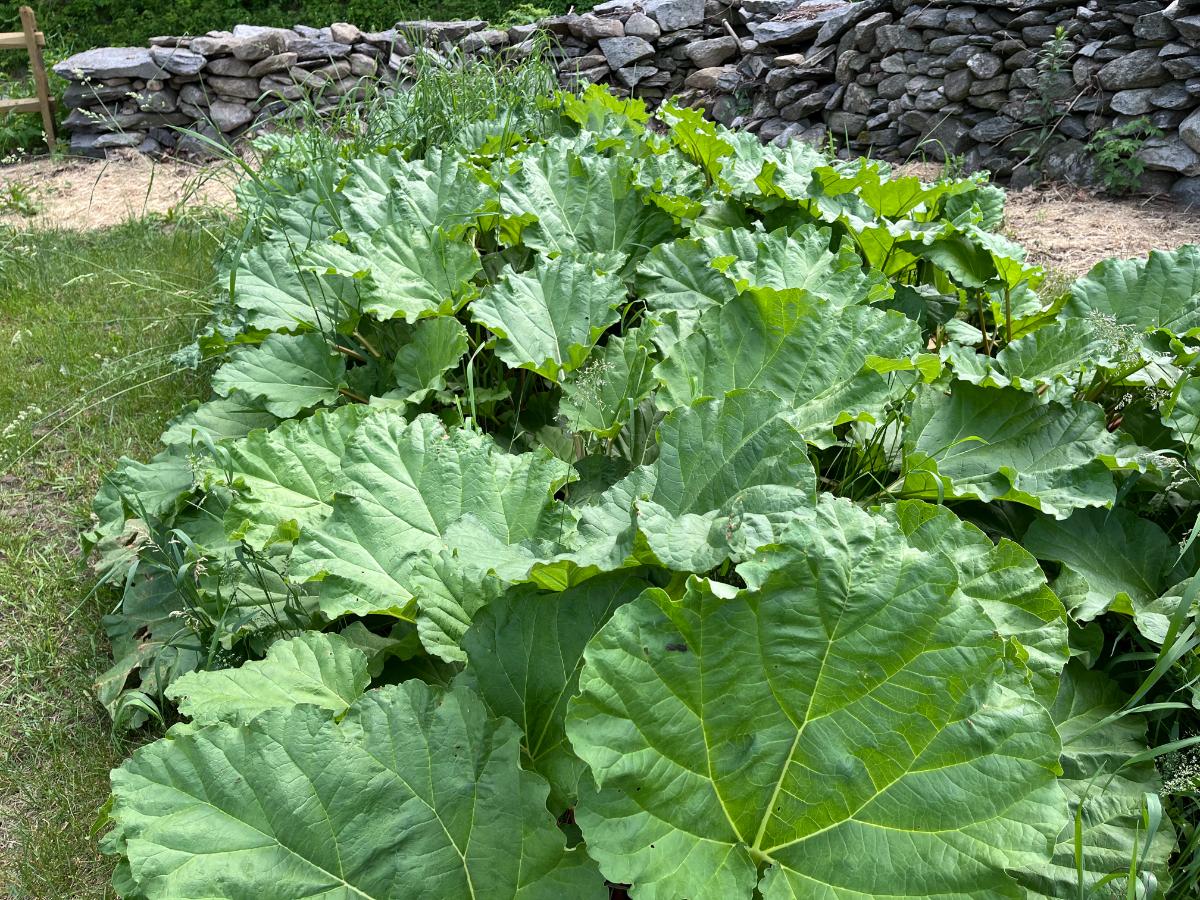
As with diseases, there aren’t very many insects that cause problems for rhubarb. Rhubarb curculio is a beetle that can be a nuisance, and there are some borers that may cause holes in stalks, but the plant usually just deals with these pests, outpaces them, and they aren’t of much (if any) concern.
So, there is some truth in this myth. It’s not that rhubarb doesn’t “catch” insects, though, it’s just that they are not usually worth doing anything about.
Good weed control and removing curly dock (which hosts rhubarb curculio) typically prevents or solves insect problems in rhubarb.
Dismiss the Myths and Enjoy More Rhubarb!
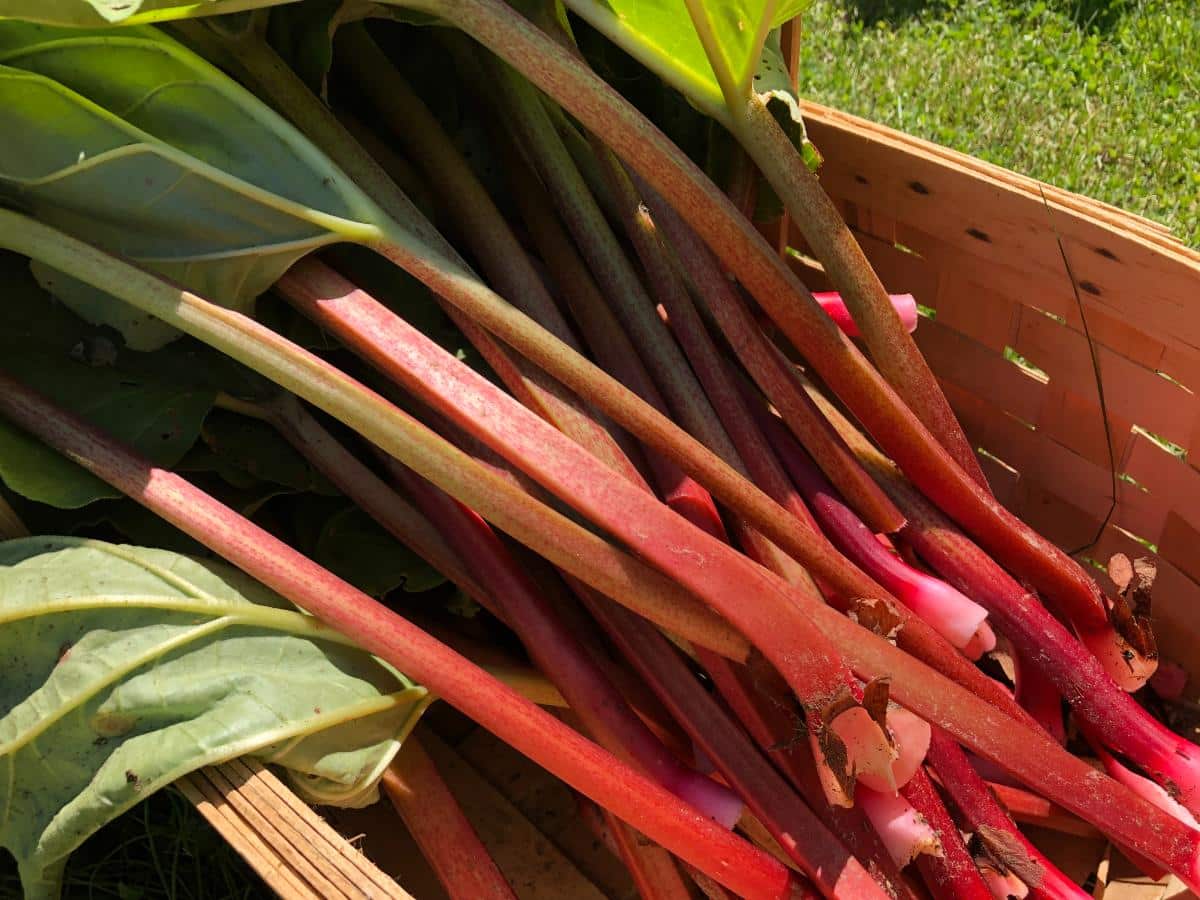
We hope this has helped to answer some questions, clear up some confusion, and dispel some wasteful and unnecessary myths about growing rhubarb.
Rhubarb is a delicious, nutritious, and even pretty plant that needs little care but rewards you with tasty fruit year after year.
Bonus – rhubarb works perfectly in a pretty edible landscape, too!

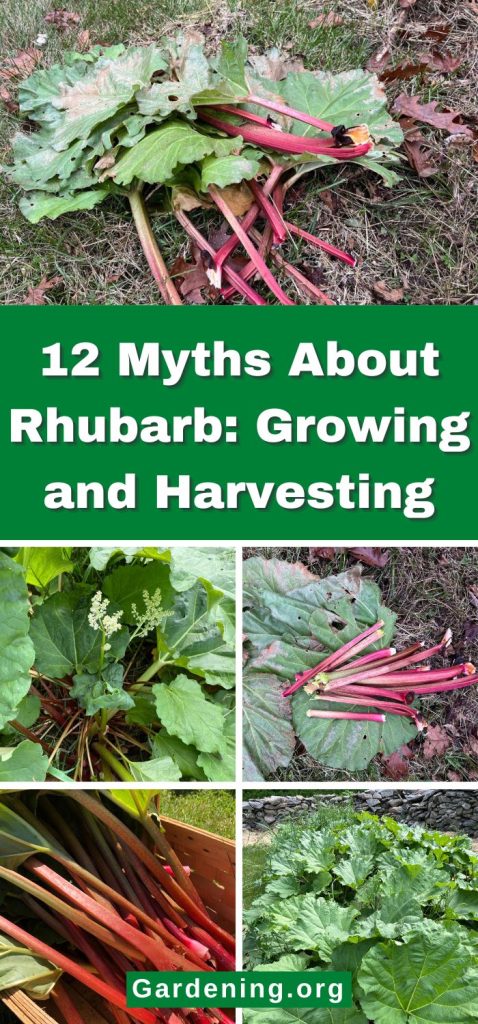
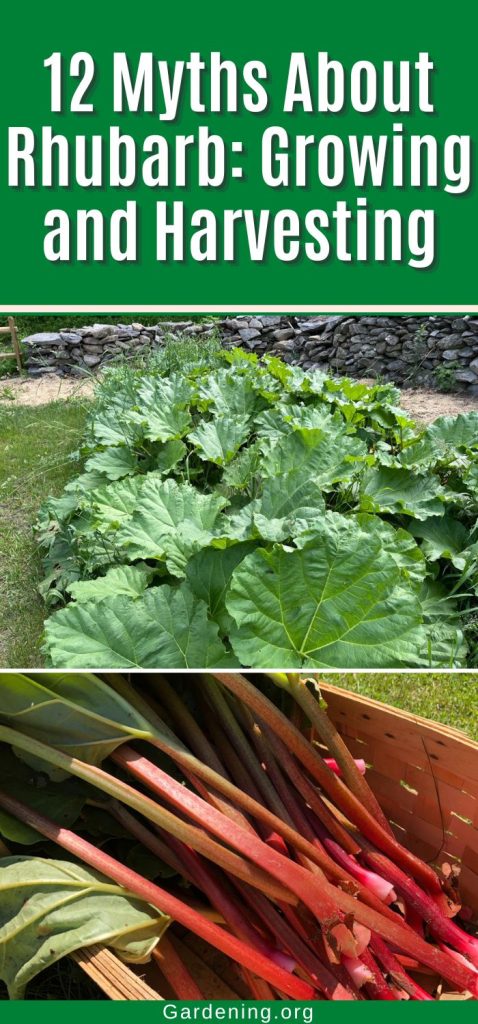
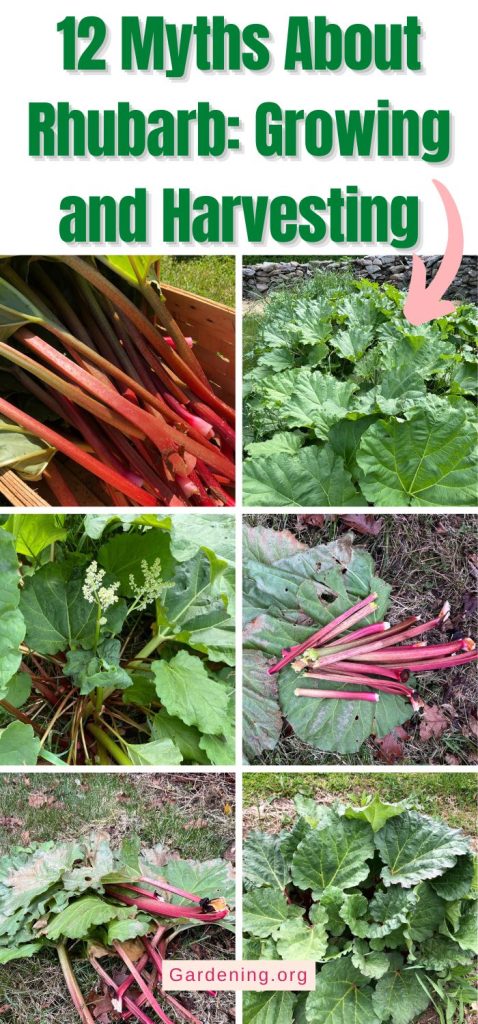
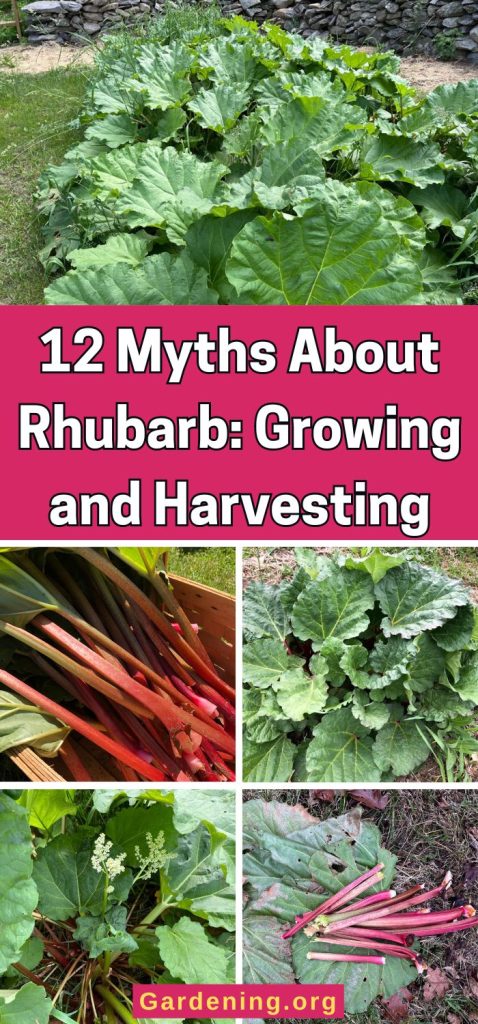




Leave a Reply